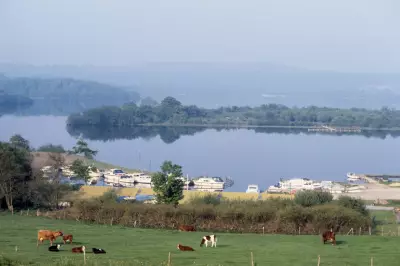
A profound and eerie metamorphosis has gripped the Lake District, turning the world-famous landscape on its head. The relentless deluge of a record-breaking wet season has performed a startling magic trick: the land has all but disappeared.
This is no longer a place defined by its soaring fells and valleys. Instead, it has become a vast, interconnected archipelago—a kingdom of water. The familiar contours of Cumbria have been submerged, creating a single, sprawling inland sea where fields, roads, and dry stone walls now lie hidden beneath a cold, grey expanse.
A Landscape Submerged
The view from high ground is one of sheer disbelief. Where the bustling A591, the region's main arterial road, should be, there is only water. The fields between Windermere and Rydal Water have vanished completely, merging these great lakes into one colossal body of water. The iconic fells—Loughrigg, Nab Scar, Heron Pike—no longer rise from the earth but emerge as lonely, isolated islands from a silent, flood-made ocean.
This dramatic reversal challenges the very identity of the National Park. It is a stark, liquid testament to the power of extreme weather events.
Echoes of a Deep Past
This breathtaking scene is not entirely new. It is a glimpse into the Lake District's ancient past, a temporary return to its original state just after the last Ice Age. Then, as now, a single, massive glacial lake filled the basin, before naturally draining away to form the familiar separate waters of Windermere, Grasmere, and Rydal.
Walking the few accessible paths now feels like navigating the shore of a newly born world. The silence is broken not by birdsong but by the sombre lap of water against tarmac and the occasional distant hum of a rescue boat, the new public transport of this altered realm.
A Stark Warning Written in Water
Beyond the awe-inspiring spectacle lies a deeper, more unsettling narrative. This event is a powerful case study in climate vulnerability. It exposes how quickly our managed landscapes can be overwhelmed and how infrastructure, painstakingly built over centuries, can be rendered obsolete in a matter of days.
The flooded Lake District serves as a monumental, real-world lesson. It demonstrates the immense force of water and the fragility of the human systems imposed upon the land. This is more than just flooding; it is a fundamental rewiring of a beloved environment, a preview of a potentially more volatile future for Britain's cherished landscapes.





